Two years ago my daughter started to wear glasses and as our optometrist says in a polite way “she has a very unique prescription”, which really means that her eye sight is much like her Moms, horrible. At first we didn’t have her in transition lenses, but then we heard that instead of playing at recess she would just sit in the shade. When we asked her why she said ” Because the sun hurts my eyes.” I was shocked. So we went back and got her the transition lenses.
Did you know that children may be at a greater risk for UV-related eye damage? Most eye diseases and conditions develop as people get older but we should be protecting those eyes from UV damage at very early age. 25 percent of Americans’ lifetime sun exposure occurs before age 18. So when the The Vision Council wanted to chat this week, I gladly took the call.
Much like sunscreen we should be having our children wear sunglasses to go outside, but we all know that it is hard to get kids to keep them on. Not to mention, losing them or breaking them! But when you hear the effects of what UV rays can do to damage your eyes, it should be a top priority and just a matter of habit. When our kids see us doing something, typically they want to do it too.
What you need to know about UV damage and protecting your children’e eyes!
- The season and time of day affect UV intensity in virtually any area. In the United States, UV levels are highest during summer months, especially between 10 a.m. and 4 p.m.
- Age can play a part in the UV risk for young and old alike. children receive three times the annual sun exposure of adults, and research has shown that their young eyes are especially susceptible to UV-related harm. Unlike the mature lens of an adult eye, a child’s lens cannot filter out UV rays and so more radiation reaches the retina2.
- Eye color appears to be important, with studies suggesting that blue eyes are at more risk for UV damage then brown eyes. the protective pigment melanin may be the key reason since blue irises has less of it. Research has shown a higher incidence of age-related macular degeneration may be one consequence.
- It’s best to keep children out of direct sunlight during the middle of the day. Make sure they wear sunglasses and hats whenever they are outside.
- Sunglasses should be labeled either UV400 or 100% UV protection.
The wraparound styles can fit a child’s head more comfortably but they also prevent the sun’s rays from coming in on the sides. - Skin complexion may reduce some people’s risk of sunburn but has no effect on eye damage. according to the World health Organization (WhO), darker sink affords no greater defense to eyes against UV harm.
Savvy Sassy Suggests:
Eyecessorize: a site dedicated to the latest eyewear trends for every age, lifestyle and gender.
Where to buy children’s sunglasses? Fashionable kids shades for the trendiest of tikes can be found at Eye Cream Shades, Teeny Tiny Optics and Babiators!
Choosing the best Sunglasses
- The Vision Council suggests taking the following “crucial considerations” into account when choosing a pair of sunglasses: 1) Comfort (so you’ll actually wear them), 2) Reliability (buy from a reputable retailer – not street vendors or popular auction sites), 3) Active Lifestyle (consider your daily activities in your choice of sunglasses), 4) Design and fit that works best for you/your children.
- To determine if your sunglasses are reliable, look for a little sticker or tag on the lens that shows compliance with criteria set by the American National Standards Institute (ANSI). The label “UV 380” covers all UVA and UVB rays.
- For the beach or pool friendly family, consider polarized lenses. They work exceptionally well at filtering out reflected glare from shiny surfaces like water and pavement. Polarized lenses also improve contrast and visibility so you don’t feel like you need to squint.
- For the sports players and enthusiasts, you should look into impact-resistant lenses. These lenses are designed to handle high-impact, like baseballs, lacrosse balls, Frisbees, or any other projectile. Most of these lenses are made from high performance materials like polycarbonate, polyurethane or Trivex.
- For parents always on the go, consider anti-reflective lenses that provide extra protection in difficult lighting situations. These can be especially helpful on the road and during sunrise and sunset.
- The Vision Council’s website www.missingsunglasses.com is also full of useful information about sunglasses, lenses, tints and frames.
Also at missingsunglasses.com, ZIP code-specific forecasts are available daily. The map here shows the “top 25” among the monitored cities—those that in 2011 saw the most days of very high or extreme risk from unprotected sun. Every community except one had an increase in risk from the previous year.
Disclosure: I was apart of a focused conversation with The Vision Council. I am being compensated for my time and participation in the conversation. All my savvy thoughts and sassy opinions are my own. I share this information with you because it is helpful and for the safety of your children.



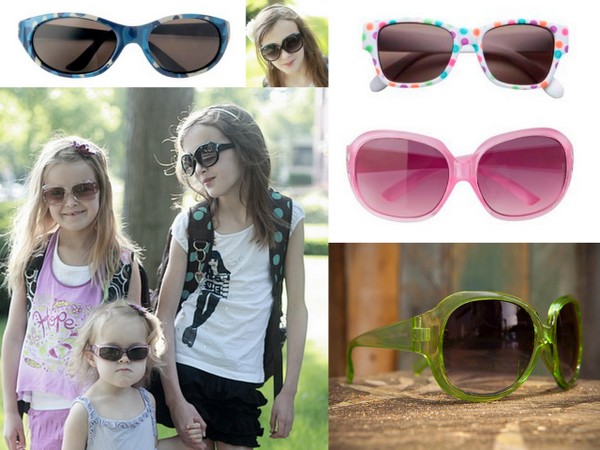
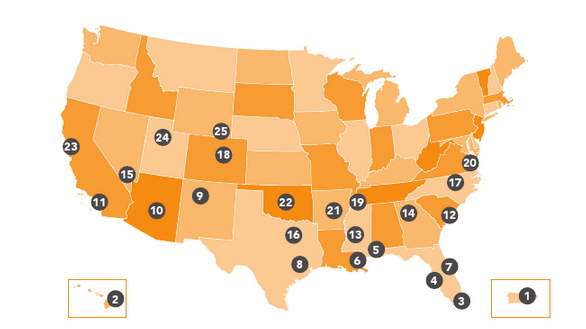
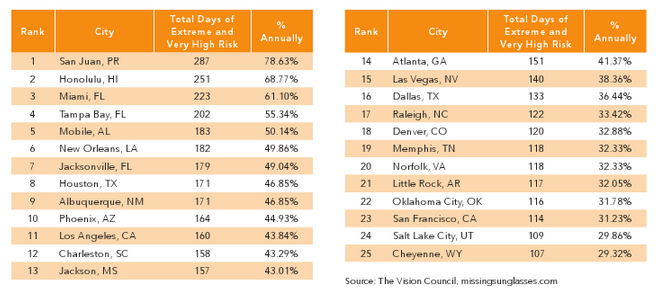
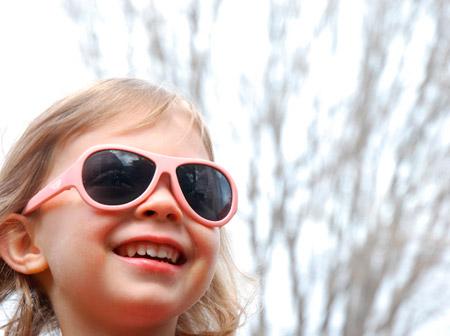

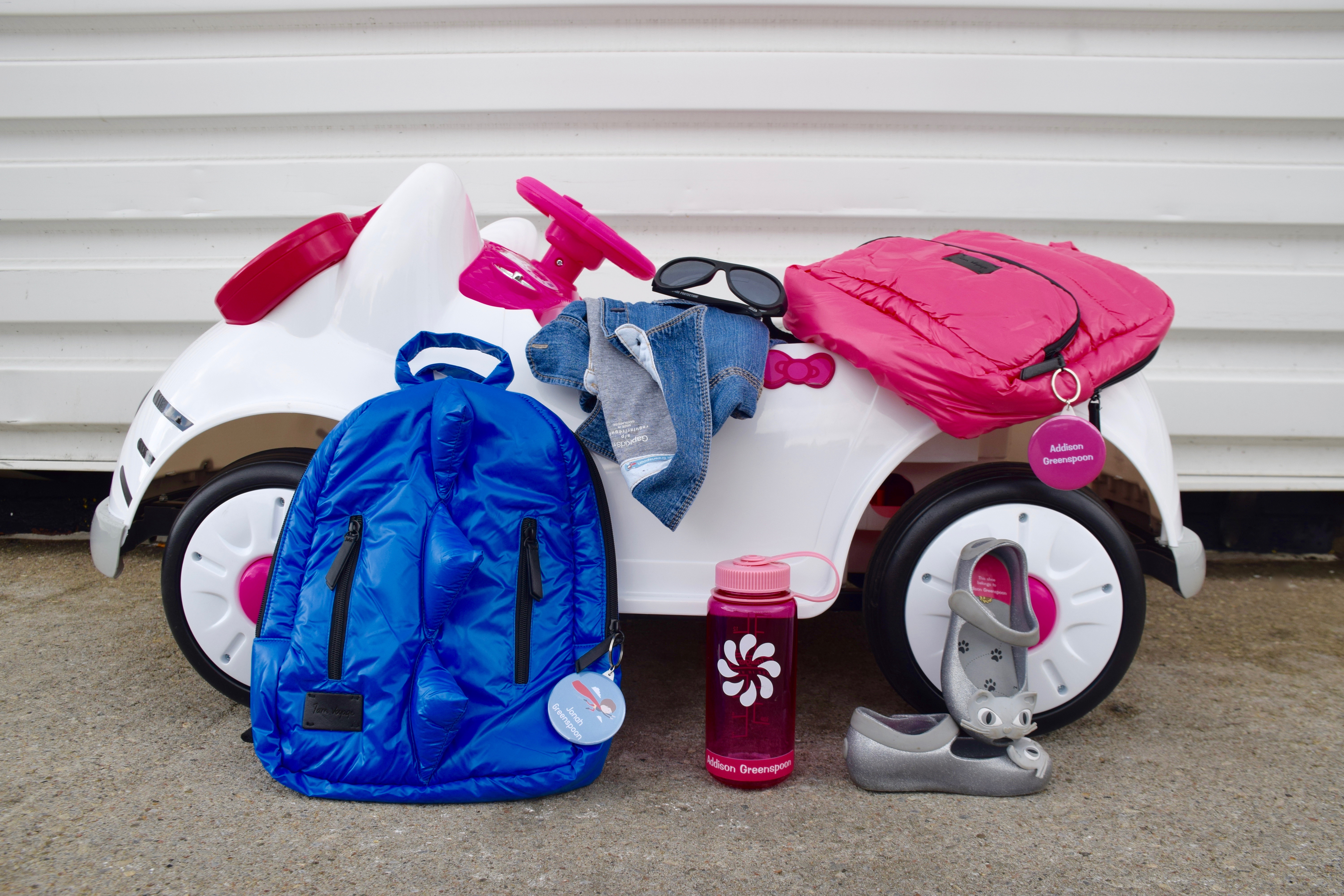
Comments
I think it’s very important for kids to wear sunglasses, their eyes are so sensitive, and they spend quite a lot of time outside…
Wow, I never thought about that…I feel horrible, I wear sunglasses all of the time and fret about the wrinkles the sun can give me but I hadn’t thought about getting my kids some.
Do you have any brand recommendations for kids sunglasses?
Thanks so much for your blog, I think your sassy opinions are just amazing.
Rock on sister!
Concerned Columbus mom
Both websites I mention have great choices! Teeny Tiny Optics and Eyes Cream Shades!
Keep on writing because this is the kind of stuff we all need.